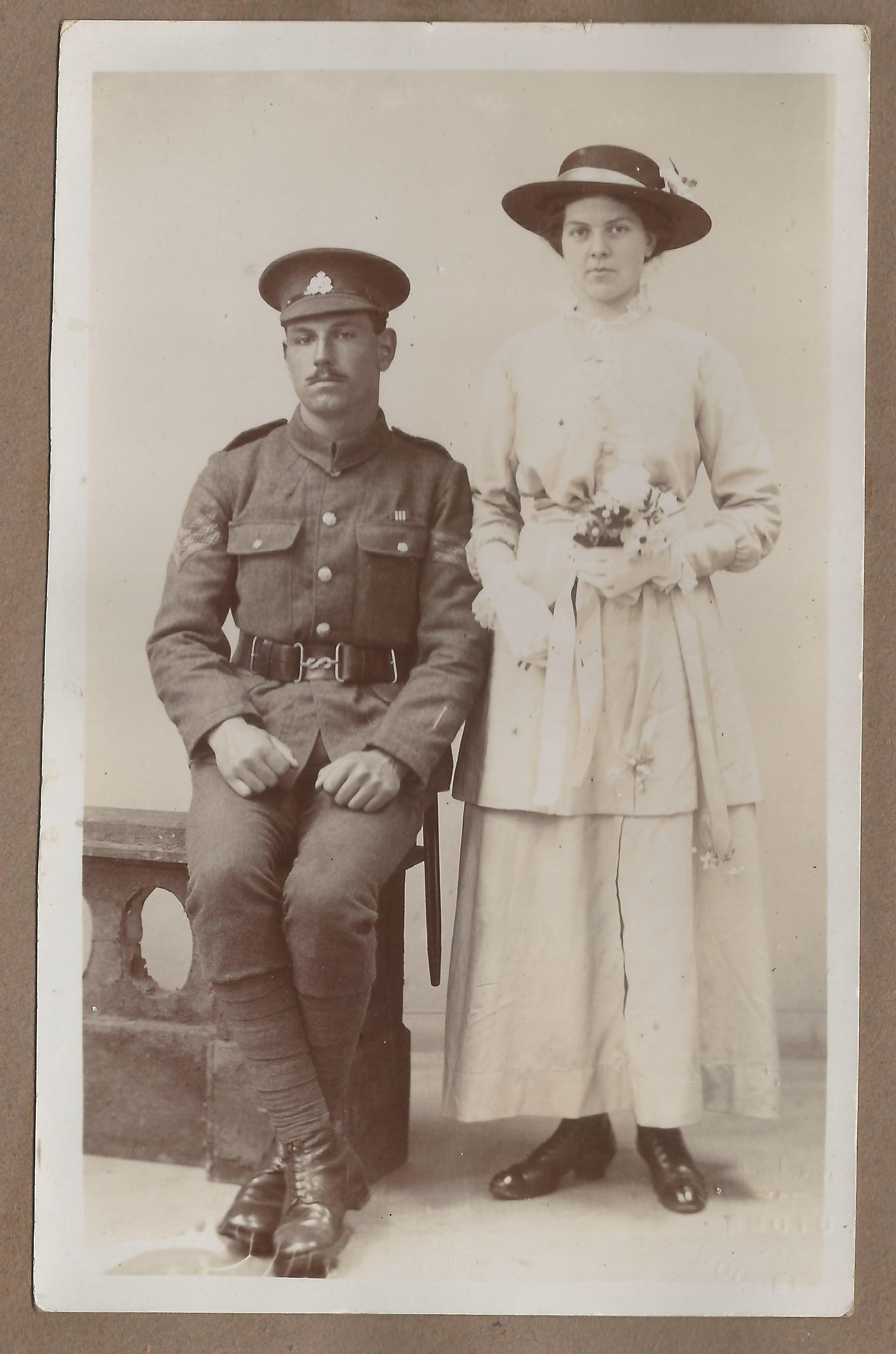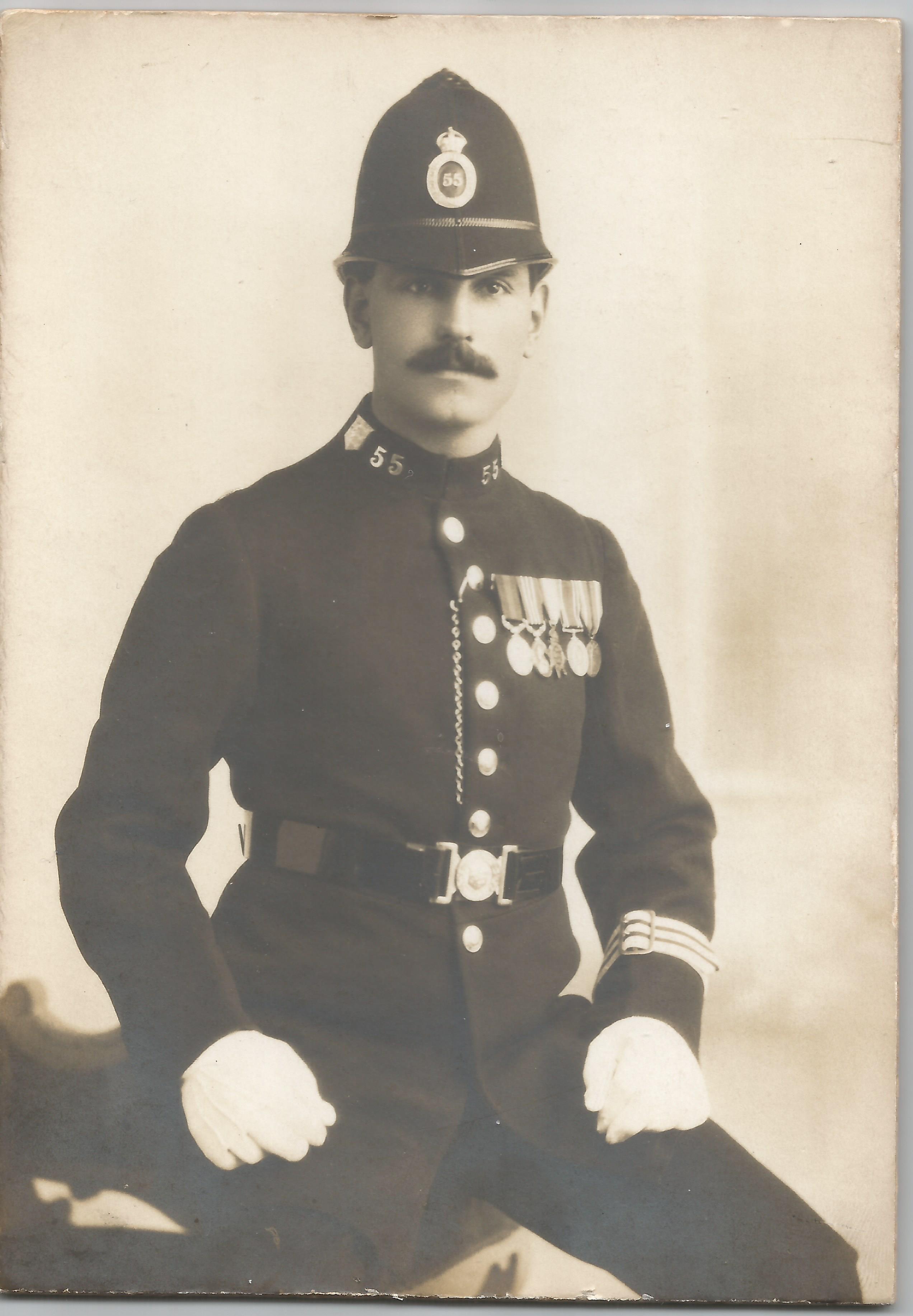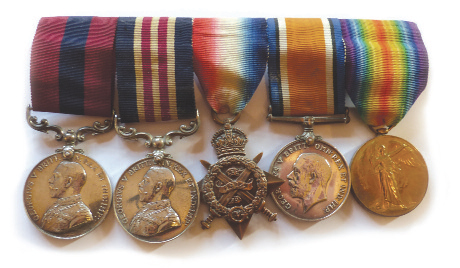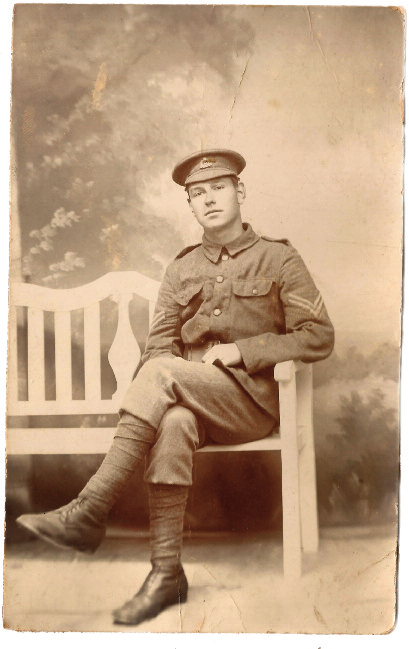William George Beaden was born in Melton on 11th May 1895, the eldest son of James and Eliza. In the 1911 census, William was still living with the family on The Street and working as a domestic gardener and his army discharge papers confirm that when he enlisted, he was working as a gardener for John Dupuis Cobbold, of the brewing family, at Holywells Hall in Ipswich.
William enlisted in the Woodbridge and Framlingham Company (“C” Company) of the 4th (Territorial) Battalion, Suffolk Regiment, on 13th March 1913 and, on July 31st 1914, he was on annual training with the them in Great Yarmouth. Due to the imminent start of hostilities, the training was cancelled and the soldiers ordered back to their home bases for disbandment—it was decided to keep the men together to enable them to be mobilised at short notice. These orders arrived on the night of 4th August and the battalion was moved to its war station in Felixstowe.
Shortly afterwards they were posted to Shenfield and then to Colchester for training in anticipation of a posting overseas. In mid-October, they were informed that they had been selected for active service, dependant on whether they could raise enough men. This was because those in the territorial force could only serve overseas if they consented. The majority of the men did and so they were sent by train to Southampton ready for France. On 8th November they boarded the SS Rossetti, arriving in Le Havre the next day. The 4th Suffolks then marched to Vielle Chappelle where they joined the Jullundur Brigade and became part of the 3rd (Lahore) Division of the Indian Army Corps.
Promotion came fairly quickly for William. He attained the rank of Lance Corporal in February 1915 and Lance Serjeant in October that same year. In May 1916, the 4th Suffolks were in trenches in the Cuiny Sector near Annequin and William had been made “Acting Serjeant”, a rank that would be confirmed the next month.
On the night of the 13th May, a raid was carried out on the enemy lines north of the La Bassee Road. Two parties, each made up of one officer, a serjeant and nine other ranks were sent. Their objective was to attack a German trench. The groups advanced through two gaps in the wire and attempted to access the target trench, which they found to be covered except for a few gaps roughly twenty feet apart. The official report of the raid says:
“Captain Brunger shot through one of these holes on to the fire-step in the trench, while Sergeant Beaden fired 3 shots into another; Sergeant Woodard fired 6 shots and Corporal Podd 6 into another”
The officer in charge, realising that there was no chance of getting into the trench, blew his whistle and the party retreated, back to their own lines. For this action, Serjeant William Beaden was awarded the Military Medal.
The battalion remained in the Cuinchy area until 7th July 1916, when they were ordered to the Somme, reaching Fricourt on the 14th. The following day, they took part in an attack on Switch Trench as part of the Battle of Bazentin Ridge. Despite the battalion suffering over two hundred casualties in this action, they were back in the same trenches only five days later and ordered to move up, in support of the 19th Brigade, to make an attack on High Wood. The attack was fiercely opposed by the enemy and little progress was made.
William received a shrapnel wound in his thigh during the attack and was sent to the 57th Field Ambulance. His wounds were severe and he was returned to England on the Hospital Ship Salta having passed through the hands of the South Midlands Casualty Clearing Station and the 5th General Hospital in Boulogne. William spent forty-two days in Fulham Military Hospital before being posted to the Suffolk Regiment Depot in Bury St Edmunds in September 1916.

William Beaden and Florence Meadows on their wedding day. On his
sleeve is a wound stripe indicating he had been wounded in action.
He also has the Military Medal ribbon on his chest.
In the summer of 1917, William returned to Melton where he married Florence Emily Meadows. He was posted to the Cambridge and Suffolk Reserve Battalion, based in Tring, before being posted back to France on 25th May 1918, where he joined the 15th (Yeomanry) Battalion of the Suffolk Regiment who had been sent to France from Egypt.
In September 1918, they were in trenches at Templeux- La-Fosse and, on the 18th, the battalion moved out to make an attack on the German lines. The action was completed successfully with the battalion achieving all its objectives and taking numerous prisoners. Some resistance was met when some German machine gun nests “held out determinedly”. It was while taking the machine gun nests that Serjeant William Beaden was awarded the Distinguished Conduct Medal. His citation reads:
“On 18th September 1918, at Templeux le Gerard, on three separate occasions, he led a handful of men in a charge against machine guns in the face of heavy fire. This prompt and gallant action caused the enemy to cease firing and hold up their hands, thus saving many lives. He was eventually wounded. He showed great courage and did splendid work.”
William received a gunshot wound to his neck, a wound considered serious enough for him to be returned to England for treatment at the East Leeds Military Hospital. He was discharged on 30th November 1918 and from the army on the 28th March the following year.
William and Florence went on to have two sons, William and Frederick, and in 1939 the family were living in Cromer Road, Ipswich, where William’s occupation was given as a policeman. William died in Ipswich in March 1970 at the age of 74.
In addition to his Distinguished Service Medal and Military Medal. William was awarded the 1914 Star and the British War and Victory Medals. On 24th March 1920, William was made an Honorary Freeman of Ipswich for his “eminent services in the recent war”.
William Beaden in his Police Uniform wearing the medals he was awarded in the Great War. William Beaden's medals

Images courtesy of the Beaden family

